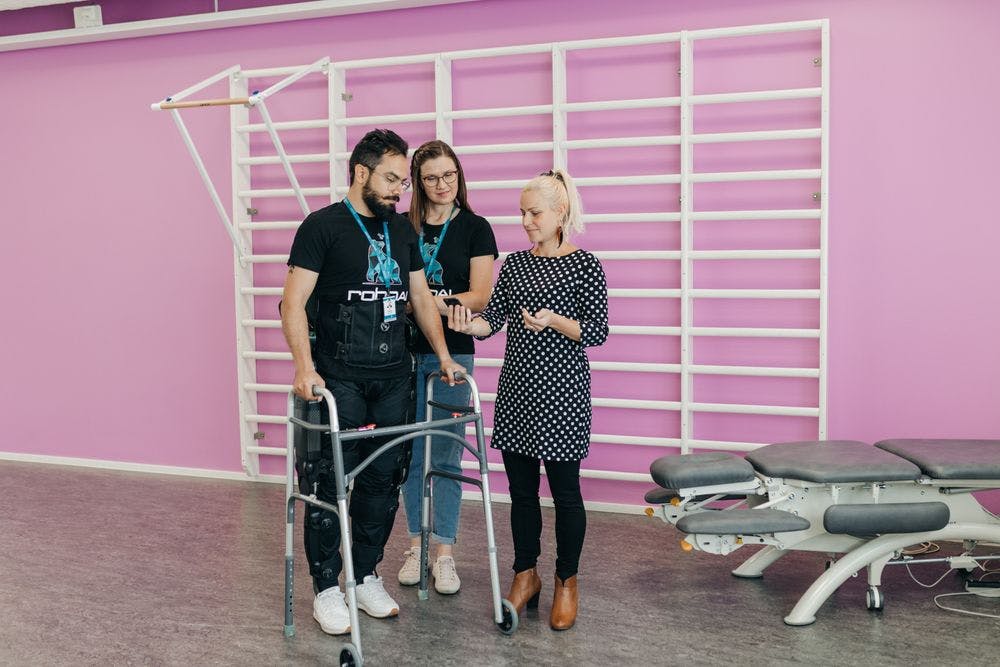"It is an emotional moment for a patient to stand for the first time after years in a wheelchair,” says SAMK project researcher Taina Jyräkoski. “They are so happy to stand upright while wearing the exoskeleton.”
The exoskeleton is at the campus of the Satakunta University of Applied Sciences (SAMK) in Pori, Finland. SAMK is an international, multi-disciplinary institute of higher education. They believe in cutting-edge research combined with a multidisciplinary focus, like what they are doing with the exoskeleton.
“The exoskeleton is a device the patient wears so they can walk,” Jyräkoski explains. “It has motors in the hips and knees, so patients can walk even if the legs are paralysed. We don’t do the rehabilitation ourselves, but we help get the evidence that it is beneficial.”
Help wanted: technology therapist
Exoskeletons are commercially available, but they are still an unusual device which you won’t find at every therapist office. SAMK wanted to conduct hard science on exoskeletons in a collaborative model. This brings a variety of specialties to the table.
“We conduct exoskeleton research with a diverse group of partners, such as teachers, researchers, students and physiotherapy clinics,” explains Sari Meri-
lampi, principal lecturer at SAMK. “We have experts at automation, healthtech, data analytics and a variety of disciplines. We are even working internationally, like with a research group in Italy.”
Many physiotherapy clinics and hospitals might be unable to make a large investment in an exoskeleton, but they have been invited to share SAMK’s model. Students get the rare chance to study an innovative device first-hand. The researchers get to be one of the very first to conduct serious studies on exoskeletons.
“This is pioneering work. The world is a small place when it comes to a new field of research like exoskeletons,” Merilampi says. “This is particularly good for the students who get to use such a novel technology. We are creating an entirely new career path as a technology therapist.”
Multi-professional environment
Some of their research includes measurement technology, patient benefits and therapist benefits. The traditional way for a therapist to help rehabilitate a patient relies heavily upon brute force. The therapist must physically help the patient move their legs. This can be demanding, even if the patient is supported.
“A patient can only take as many steps as a therapist can help them take,” Jyräkoski says. “But the therapist doesn’t have to work as hard when the exoskeleton is doing the mechanical labour. She oversees the process and makes necessary adjustments to give the most benefits to the patient.”
Exoskeletons in rehabilitation are still rare, and SAMK is happy to bring in so many specialists to experience it in a multi-professional environment.
“It is great that all these experts can use these newest solutions, which is beneficial to all stakeholders,” says Merilampi. “We work and learn together. It is a tough job, but we aren’t afraid of challenges.”
If you are interested in learning more about SAMK’s exoskeleton or other innovative projects, please visit the website samk.fi/en.
Editor: David J. Cord
